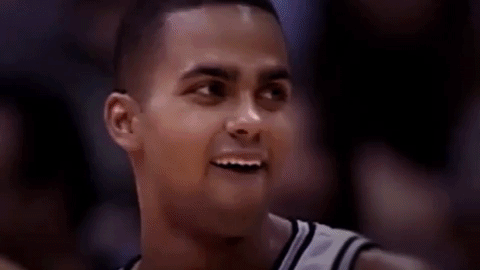When engaged, Lebron can be one of the more imposing defensive players in the game, even at age 35. But for most of the last 10 years, he hasn't regularly guarded the most imposing threat on the other team. That job was usually reserved for guys like Shane Battier, Iman Shumpert, Tristan Thompson, Jeff and Danny Green, and AD, to name a few.
If he's not guarding top options, how much is Lebron really contributing defensively? Let's examine.
It stands to reason that if Lebron is helping lots and/or guarding the ball lots that he'd wind up with lots of shots defended. Besides being common sense, we know this to be true from DFGAs leaderboards every year which are basically a who's who of the best (and worst) help defenders and shot contesters in the NBA.
But we don't even need to go there, and instead we can look at where Lebron stood vs. his own teammates in shots defended as that should give us a better idea who was actually finishing possessions defensively (independent of outcome).
DFGAs per 36
14 Heat RS: 1. Battier (18.1), Bosh (15.0), Lewis (16.0), Birdman (14.3), Chalmers (10.4), Wade (9.0), 7. Lebron (9.1)
14 Heat PS: 1. Lewis (14.6), Birdman (13.9), Bosh (13.4), Allen (10.6), Chalmers (9.9), Wade (9.8), 7. Lebron (7.2)
15 Cavs RS: 1. Mozgov (19.4), Varejao (17.5), TT (16.0), Love (14.6), Shump (12.2), Kyrie (10.8), JR (9.3), 8. Lebron (7.9)
15 Cavs PS: 1. Mozgov (18.7), TT (15.6), Delly (13.3), Kyrie (12.0), Shump (10.3), JR (9.1), 7. Lebron (8.3)
16 Cavs RS: 1. Mozgov (19.2), Love (15.3), TT (16.2), Delly (12.7), Shump (10.6) Kyrie (9.8), JR (8.8), 8. Lebron (8.5)
16 Cavs PS: 1. TT (16.1), Love (15.7), Frye (14.7), Kyrie (11.1), RJ (12.3), Shump (11.3), 7. Lebron (9.3), JR (9.1)
20 Lakers RS: 1. McGee (19.1), DH (16.6), Green (15.7), AD (15.3), Caruso (13.7), Kuz (13.1), KCP (10.1), 8. Lebron (8.1)
20 Lakers PS: 1. DH (17.4), Morris (14.6), AD (14.5), Green (14.0), Caruso (12.4), Kuz (10.3), 7. Lebron (10.1), KCP (8.2)
21 Lakers RS: 1. Gasol (20.1), AD (16.1), Harrell (15.6), Matthews (13.2) Kuz (12.7), Schroder (12.6), 7. Lebron (9.6), KCP (7.9)
Basically Lebron defends among the least amount of shots per 36 of rotation guys on all his teams. He either isn't guarding the ball or isn't helping on shot attempts or both. It's also worth noting that although Lebron has some remarkable DFG% numbers in 2016, most of the other years range somewhere between 0% and -3% diff, so he's having consistent, marginally negative impact on shooters but it isn't quite at the level of the best defenders in the game (who are likely also guarding tougher scorers in addition to way more shots as he typically takes the weaker assignment).
Again, we know Lebron is a good defender based on eye test and the fact that he's generally had negative net Drtg on/offs over the years. But there seems to be a major disconnect between the observable data and common narrative surrounding Lebron's defensive activity, particularly in help defense. I don't doubt that he's doing things to deter good offense but the easiest way to do that is contest a shot and make them miss, and that's not something Lebron has done with any meaningful frequency. Given this, how much defensive credit should he get despite being a relatively low activity player?












